Related Research Articles
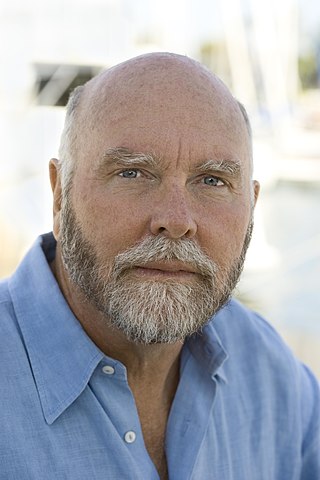
John Craig Venter is an American biotechnologist and businessman. He is known for leading one of the first draft sequences of the human genome and assembled the first team to transfect a cell with a synthetic chromosome. Venter founded Celera Genomics, the Institute for Genomic Research (TIGR) and the J. Craig Venter Institute (JCVI). He was the co-founder of Human Longevity Inc. and Synthetic Genomics. He was listed on Time magazine's 2007 and 2008 Time 100 list of the most influential people in the world. In 2010, the British magazine New Statesman listed Craig Venter at 14th in the list of "The World's 50 Most Influential Figures 2010". In 2012, Venter was honored with Dan David Prize for his contribution to genome research. He was elected to the American Philosophical Society in 2013. He is a member of the USA Science and Engineering Festival's advisory board.

Francis Harry Compton Crick was an English molecular biologist, biophysicist, and neuroscientist. He, James Watson, Rosalind Franklin, and Maurice Wilkins played crucial roles in deciphering the helical structure of the DNA molecule.

James Dewey Watson is an American molecular biologist, geneticist, and zoologist. In 1953, he co-authored with Francis Crick the academic paper proposing the double helix structure of the DNA molecule. Watson, Crick and Maurice Wilkins were awarded the 1962 Nobel Prize in Physiology or Medicine "for their discoveries concerning the molecular structure of nucleic acids and its significance for information transfer in living material".

Rosalind Elsie Franklin was a British chemist and X-ray crystallographer whose work was central to the understanding of the molecular structures of DNA, RNA, viruses, coal, and graphite. Although her works on coal and viruses were appreciated in her lifetime, Franklin's contributions to the discovery of the structure of DNA were largely unrecognized during her life, for which Franklin has been variously referred to as the "wronged heroine", the "dark lady of DNA", the "forgotten heroine", a "feminist icon", and the "Sylvia Plath of molecular biology".

Edwin Herbert Land, ForMemRS, FRPS, Hon.MRI was an American scientist and inventor, best known as the co-founder of the Polaroid Corporation. He invented inexpensive filters for polarizing light, a practical system of in-camera instant photography, and the retinex theory of color vision, among other things. His Polaroid instant camera went on sale in late 1948 and made it possible for a picture to be taken and developed in 60 seconds or less.

Maurice Hugh Frederick Wilkins was a New Zealand-born British biophysicist and Nobel laureate whose research spanned multiple areas of physics and biophysics, contributing to the scientific understanding of phosphorescence, isotope separation, optical microscopy and X-ray diffraction, and to the development of radar. He is known for his work at King's College London on the structure of DNA.

The Double Helix: A Personal Account of the Discovery of the Structure of DNA is an autobiographical account of the discovery of the double helix structure of DNA written by James D. Watson and published in 1968. It has earned both critical and public praise, along with continuing controversy about credit for the Nobel award and attitudes towards female scientists at the time of the discovery.
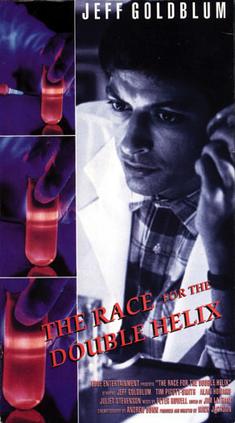
Life Story is a 1987 television historical drama which depicts the progress toward, and the competition for, the discovery of the structure of DNA in the early 1950s. It was directed by Mick Jackson for the BBC's Horizon science series, and stars Jeff Goldblum, Tim Pigott-Smith, Juliet Stevenson, and Alan Howard. It won several awards in the UK and U.S., including the 1988 BAFTA TV Award for Best Single Drama.

The J. Craig Venter Institute (JCVI) is a non-profit genomics research institute founded by J. Craig Venter, Ph.D. in October 2006. The institute was the result of consolidating four organizations: the Center for the Advancement of Genomics, The Institute for Genomic Research (TIGR), the Institute for Biological Energy Alternatives, and the J. Craig Venter Science Foundation Joint Technology Center. It has facilities in Rockville, Maryland and San Diego, California.

Raymond George Gosling was a British scientist. While a PhD student at King's College, London he worked under the supervision of Maurice Wilkins and Rosalind Franklin. The crystallographic experiments of Franklin and Gosling, together with others by Wilkins, produced data that helped James Watson and Francis Crick to infer the structure of DNA.

"Molecular Structure of Nucleic Acids: A Structure for Deoxyribose Nucleic Acid" was the first article published to describe the discovery of the double helix structure of DNA, using X-ray diffraction and the mathematics of a helix transform. It was published by Francis Crick and James D. Watson in the scientific journal Nature on pages 737–738 of its 171st volume.
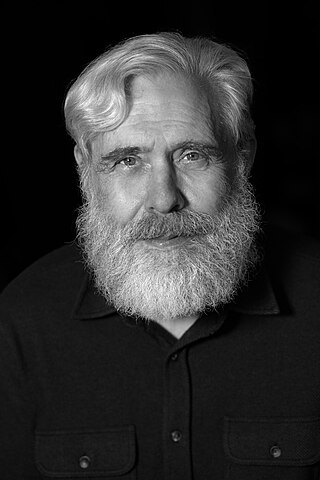
George McDonald Church is an American geneticist, molecular engineer, chemist, serial entrepreneur, and pioneer in personal genomics and synthetic biology. He is the Robert Winthrop Professor of Genetics at Harvard Medical School, Professor of Health Sciences and Technology at Harvard University and Massachusetts Institute of Technology, and a founding member of the Wyss Institute for Biologically Inspired Engineering at Harvard. Through his Harvard lab Church has co-founded around 50 biotech companies pushing the boundaries of innovation in the world of life sciences and making his lab as a hotbed of biotech startup activity in Boston. In 2018, the Church lab at Harvard made a record by spinning off 16 biotech companies in one year. The Church lab works on research projects that are distributed in diverse areas of modern biology like developmental biology, neurobiology, info processing, medical genetics, genomics, gene therapy, diagnostics, chemistry & bioengineering, space biology & space genetics, and ecosystem. Research and technology developments at the Church lab have impacted or made direct contributions to nearly all "next-generation sequencing (NGS)" methods and companies. In 2017, Time magazine listed him in Time 100, the list of 100 most influential people in the world. In 2022, he was featured among the most influential people in biopharma by Fierce Pharma, and was listed among the top 8 famous geneticists of all time in human history. As of January 2023, Church serves as a member of the Bulletin of the Atomic Scientists' Board of Sponsors.

The Knight Science Journalism program offers 9-month research fellowships, based at its headquarters at the MIT School of Humanities, Arts, and Social Sciences, to elite staff and freelance journalists specializing in coverage of science and technology, medicine, or the environment. Fellows are chosen from an international application pool in a competitive process each spring, and reside in Cambridge, Massachusetts, for two semesters of audited coursework and research at MIT, Harvard, and surrounding institutions.
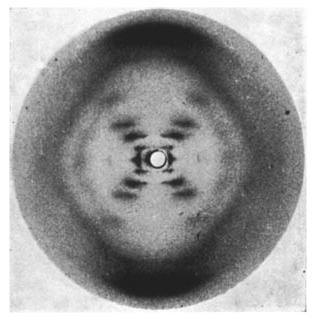
Photo 51 is an X-ray based fiber diffraction image of a paracrystalline gel composed of DNA fiber taken by Raymond Gosling, a graduate student working under the supervision of Rosalind Franklin in May 1952 at King's College London, while working in Sir John Randall's group. The image was tagged "photo 51" because it was the 51st diffraction photograph that Franklin had taken. It was critical evidence in identifying the structure of DNA.
Shredding refers to the process in bioinformatics of taking assembled gene sequences and disassembling them into short sequences of usually 500 to 750 base pairs (bp). This is generally done for the purpose of taking the short shredded sequences and reapplying various analysis and bioinformatic techniques. Being able to cut DNA samples and then run them through gel electrophoresis to study each strand in order to help find cures for diseases or illnesses is also another purpose.
Tony Bartelme, an American journalist and author, is the senior projects reporter for The Post and Courier in Charleston, South Carolina. He has been a finalist for four Pulitzer Prizes.

Erez Lieberman Aiden is an American research scientist active in multiple fields related to applied mathematics. He is an associate professor at the Baylor College of Medicine, and formerly a fellow at the Harvard Society of Fellows and visiting faculty member at Google. He is an adjunct assistant professor of computer science at Rice University. Using mathematical and computational approaches, he has studied evolution in a range of contexts, including that of networks through evolutionary graph theory and languages in the field of culturomics. He has published scientific articles in a variety of disciplines.
Anne Sayre was an American writer well known for her biography of Rosalind Franklin, one of the discoverers of the structure of DNA.

The Genome Project - Write is a large-scale collaborative research project that focuses on the development of technologies for the synthesis and testing of genomes of many different species of microbes, plants, and animals, including the human genome in a sub-project known as Human Genome Project-Write (HGP-Write). Formally announced on 2 June 2016, the project leverages two decades of work on synthetic biology and artificial gene synthesis.
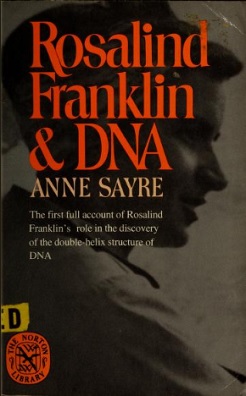
Rosalind Franklin and DNA is a biography of an English chemist Rosalind Franklin (1920–1958) written by her American friend Anne Sayre in 1975. Franklin was a physical chemist who made pivotal research in the discovery of the structure of DNA, known as "the most important discovery" in biology. DNA itself had become "life's most famous molecule". While working at the King's College London in 1951, she discovered two types of DNA called A-DNA and B-DNA. Her X-ray images of DNA indicated helical structure. Her X-ray image of B-DNA taken in 1952 became the best evidence for the structure of DNA. For the discovery of the correct chemical structure of DNA, the Nobel Prize in Physiology or Medicine 1962 was shared by her colleagues and close researchers James Watson, Francis Crick and Maurice Wilkins; she had died four years earlier in 1958 making her ineligible for the award.
References
- 1 2 3 "Victor McElheny, guest". Coast to Coast with George Noory.
- ↑ "Victor K. McElheny, NF '63". Nieman Reports (niemannreports.org).
- ↑ "About Us". Program in Science, Technology, and Society, Massachusetts Institute of Technology.
- 1 2 Garwin, Richard L. (1999). "Insisting on the Impossible: The Life of Edwin Land by Victor K. McElheny". Physics Today. 52 (2): 65–66. doi:10.1063/1.882599. ISSN 0031-9228. page 66
- ↑ "Victor McElheny, Research Affiliate". Program in Science, Technology, and Society, Massachusetts Institute of Technology.
- ↑ "The Victor K. McElheny Award". Knight Science Journalism, MIT.
- ↑ Rose, Hilary (15 June 2002). "In the shadow of men". The Guardian.
- ↑ Sayre, Anne (2000). Rosalind Franklin and DNA. Norton. p. 17. ISBN 978-0-393-32044-2.
- ↑ "December 2019 email from Victor McElheny to David Brown quoted in the comments section of the video Victor McElheny - Drawing the Map of Life: Inside the Human Genome Project". YouTube. WGBHForum. 6 September 2012.
- ↑ "Review of Insisting on the Impossible: The Life of Edwin Land". Kirkus Reviews. 1998.
- ↑ "Review of Watson and DNA: Making a Scientific Revolution by Victor K. McElheny". Publishers Weekly. 6 January 2003.
- ↑ "Review of Drawing the Map of Life: Inside the Human Genome Project by Victor K. McElheny". Kirkus Reviews. 2010.
- ↑ "Victor K. McElheny - Events - Harvard Book Store". harvard.com. 20 July 2010. (promotion of Drawing the Map of Life: Inside the Human Genome Project)